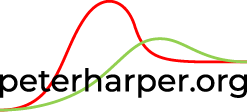In my view, the history of environmental thought will be the most important feature of historical exegesis in the future. It deals with very large, conserved, physical forces and quantities that are bound to mould and constrain the development of humanity. It is fundamentally obvious and essentially rather simple, and it will perhaps astonish our descendants that we paid it so little attention.
What you will find here are samples of my tiny contributions. But as I was nearly always ‘a child my time’ these all stand for many others like me.
It goes back to 1972. As part of the inevitable ‘fringe’ around the UN Conference on the Human Environment in Stockholm, August 1972, I was involved in an exhibition of Alternative Technology at the Modern Art Museum. Unfortunately few images have survived, but here are some ‘historical’ documents:
The Exhibition (material assembled 2017, Word)
Some Reminiscences (2019, Word)
Comments on the proposed exhibits (2019, Word)
Much of the same material was gathered together for a special edition of Digital Culture and Society, Volume 6 No.1, p.153 (2020). The text has not yet been released for Open Access, but here is a facsimile, that includes a discussion with the historian Simon Sadler: The Exhibition of People’s Technology 1972
In 2012 I was invited to Sweden as part of a 40-year anniversary of the UNCHE. Here is my presentation: UNCHE after 40 years 2012 (ppt)
A more detailed take is The Road to the Mainstream 2000 (doc)
....which is surprisingly optimistic. Contrast the view 14 years later: How Did We Get Here? 2014 (ppt)
Much the same material is interpreted in terms of polarised stories or narratives, with attempts to see the matter from both 'sides': Stories of the Future 2008 (doc)
More specifically, I and an old friend and comrade-in-arms, Godfrey Boyle, held a conference to mark the 40th anniversary of the concept of 'Alternative Technology'. Here are some background notes, chewing some fat about our shared history: A Conversation with Godfrey Boyle 2012 (doc)
A few years later we collaborated on a 40-year retrospective of our jointly-edited work Radical Technology. This was a three-day conference held in Bristol in 2016. It had its own web site full of interesting stuff here.
Radical Technology featured interviews with many of the savants of the time. I myself interviewed the highly influential thinker Ivan Illich, but the item never made it into the book. Here it is:
An Interview with Ivan Illich. (doc 2022)
More specifically still, the history of CAT is the subject of a substantial programme of work spanning several years. The early 00s continued the enduring myth of CAT as a heroic powerhouse of alternative innovation in every direction. And in many ways, it was. The presentation is in two parts to fit the size limits of the web site program.
CAT Show Part 1 2001 (ppt)
CAT Show Part 2 2001 (ppt)
A more academic-style history of the technical systems is found here in: Alternative Technology and Social Organisation in an Institutional Context PDF 2016
But eventually the Great Myth crossed the event-horizon of an organisational black hole, from which no information could be retrieved. The result is a heroic saga that simply runs into the sand: Demanding the Impossible. Word 2020.
Going back to an earlier time, the next item has historical interest because it represents the organisation grappling with a classic environmental problem. Such issues cropped up regularly, and you can see all the stock characters and positions that still inform the issues of today. The IGER Affair 2001 (doc)
Finally, there is a long interview with me by Allan Shepherd, as part of the Oral History Project, which can be found in the Inteviews section of SERVICES. This illuminates year to year experience through the lived experience of one person.

